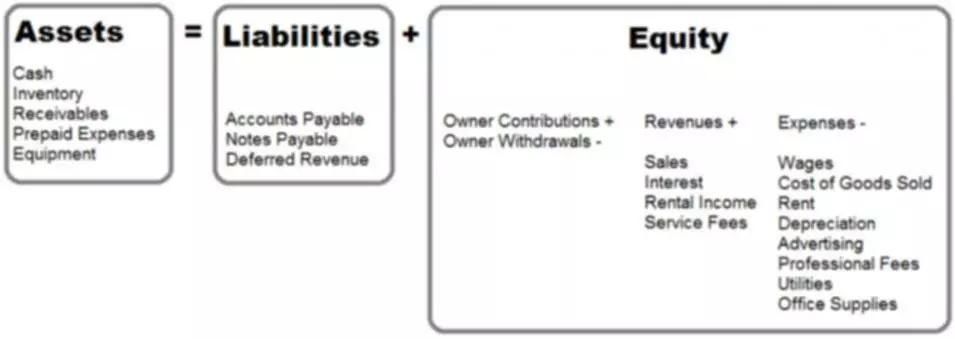Content
- How to Journalize Closing Entries for a Merchandise Corporation
- Permanent account example
- Types of Temporary Accounts
- Examples of Permanent Accounts
- Join PRO or PRO Plus and Get Lifetime Access to Our Premium Materials
- Temporary Accounts Vs Permanent Accounts: How do Temporary Accounts Differ from Permanent Accounts

The temporary accounts of a sole proprietorship are closed to the owner’s capital account. It zeroes out the temporary account balances to get those accounts ready to be used in the next accounting period. In a business, there are many different types of accounts that can be used to manage finances. The definition of a temporary account is an account whose balance is not carried over at the end of every accounting year and thus begins the new year with zero balance. The primary use of a temporary account is to show how any draws, expenses, and/or revenue have affected an equity account. These accounts track business expenses and revenue to calculate the net loss and net profit for a specific period. The temporary accounts can also be referred to as nominal accounts.

Every week the payments are then transferred to the insurance company’s account. It is shown as the part of owner’s equity in the liability side of the balance sheet of the company. Financial StatementsFinancial statements are written https://www.bookstime.com/ reports prepared by a company’s management to present the company’s financial affairs over a given period . To help you further understand each type of account, review the recap of temporary and permanent accounts below.
How to Journalize Closing Entries for a Merchandise Corporation
Give them to developers when they ask for admin access to your site. Drawing or withdrawal accounts of the owner/s in sole proprietorships and partnerships. Are you ready to use Gaviti to simplify your accounting process? It only takes one mistake for your accounts to be thrown off completely.
- Once the period comes to a close, you or your bookkeeper will need to perform closing entries, which will move the balances in these accounts to the appropriate permanent accounts.
- Rather, the balance in these accounts is moved to the relevant permanent account at the end of the time.
- Businesses use temporary accounts to keep a track of their achievements.
- Moreover, such accounts may continue to exist throughout the life of the company.
- A temporary account is one in which the balance is not carried forward at the end of a fiscal year’s accounting.
Automating the accounts receivables process reduces the work accounting professionals do manually. It also makes it easier to track accounts that accountants believe they will not receive payment for, which are known as doubtful accounts. If you’re a solo proprietor or your company is a partnership, you’ll need to shift activity from your drawing account for any excises received from the company. Organizations use liability accounts to record and manage debts owed, including expenses, loans, and mortgages. Asset accounts track everything a business owns, including physical items (e.g., inventory) and less tangible property (e.g., stocks).
Permanent account example
If there were no temporary accounts, then the company would carry over the year 1 balance to year 2. Thus, the revenue balance at the end of year 2 will be $35,000. Such a figure doesn’t give accurate information about the revenue that a company made in year 2. The Drawings Account is part of Owner’s Equity and it represents the total drawings the owners or partners of the company did for the current accounting period.

Close a revenue account by writing a debit entry for the total amount generated in the period. For example, if temporary account your company generates $10,000 for the period, you must write a debit in the revenue account for $10,000.
Types of Temporary Accounts
These temporary accounts can be used for any accounting period, including a quarter. A company continues rolling the balance of a permanent account forward across fiscal periods, maintaining one cumulative balance. With a temporary account, an organization redistributes any funds remaining at the end of a specific timeframe, creating a zero balance.
Temporary accounts act as an interim account to ensure transactions made in one period don’t get mixed with data from the next year. Capital account by making a credit of the amount in the latter. To allow me to investigate on your site, install & activate the free WordPress plugin – Temporary Login Without Password, and give me admin access to your site via the temporary link generated. Once I’ll get the admin access, I’ll check your site & will try to resolve the issue. Create secure, self-expiring ⏱️, automatic login links 🔗 for WordPress.
Purchases, Purchase Discounts, and Purchase Returns and Allowances are also temporary accounts. A temporary account is one in which the balance is not carried forward at the end of a fiscal year’s accounting. Rather, the balance in these accounts is moved to the relevant permanent account at the end of the time. The revenue account is used to keep track of all money earned during a given period of time. The revenue account records any money received for goods and services given within the defined accounting period. Tracking the amount of money received for goods and services provided, revenue accounts include interest income and sales accounts.
- It aims to show the exact revenues and expenses for a company for a specific period.
- While assets, liabilities & capital directly represents the going concern of the business, they remain in the balance sheet along with the company’s existence.
- Read on to learn the difference between temporary vs. permanent accounts, examples of each, and how they impact your small business.
- They are administered by accounting staff like other accounts and records are kept to document account activity so that taxes and other filings can be filled out appropriately.
- The main distinction between a temporary and permanent account is the length of accumulated balances.